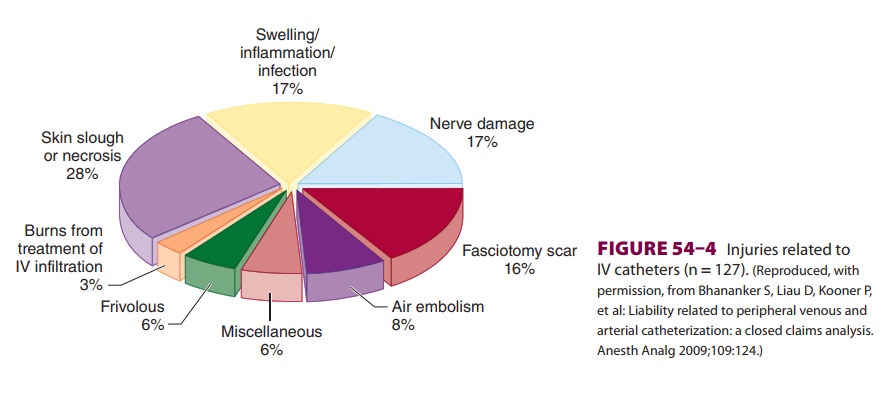Chapter: Clinical Anesthesiology: Perioperative & Critical Care Medicine: Anesthetic Complications
Anesthetic Complications: Vascular Cannulation

VASCULAR CANNULATION
Claims related to central venous access in
the ASA database were associated with patient death 47% of the time and
represented 1.7% of the 6449 claims reviewed. Complications secondary to
guidewire or catheter embolism, tamponade, bloodstream infec-tions, carotid
artery puncture, hemothorax, and pneu-mothorax all contributed to patient
injury. Although guidewire and catheter embolisms were associated with
generally lower level patient injuries, these com-plications were generally
attributed to substandard care. Tamponade claims following line placement were
often for patient death. The authors of a 2004 closed claims analysis
recommended reviewing the chest radiograph following line placement and
repo-sitioning lines found in the heart or at an acute angle to reduce the
likelihood of tamponade. Brain damage and stroke are associated with claims
secondary to carotid cannulation. Multiple confirmatory methods should be used
to ensure that the internal jugular and not the carotid artery is cannulated.
Claims related to peripheral vascular
can-nulation in the ASA database accounted for 2% of 6849 claims, 91% of which
were for complications secondary to the extravasation of fluids or drugs from
peripheral intravenous catheters that resulted in extremity injury (Figure
54–4). Air embolisms, infections, and vascular insufficiency secondary to
arterial spasm or thrombosis also resulted in claims. Of interest, intravenous
catheter claims in patients who had undergone cardiac surgery formed the
largest cohort of claims related to peripheral intrave-nous catheters, most
likely due to the usual practice of tucking the arms alongside the patient
during the procedure, placing them out of view of the anesthe-sia providers.
Radial artery catheters seem to gen-erate few closed claims; however, femoral
artery catheters can lead to greater complications and potentially increased
liability exposure.

Related Topics